To thank
for organizing a delightful kayaking excursion among the shipwrecks of the Potomac, I took her to a superfund site in the middle of the Delaware River that was donated to New Jersey by the President of Venezuela, and made her drive through neighborhoods of Camden where the people looked concerned for her wellbeing if she made the wrong turn. This trade-off makes me feel a bit like Sully in Nobody’s Fool, by Richard Russo, a book which Hannah recommended to me, and which I thoroughly enjoyed. (More about Sully later.) Hannah safely navigated Camden, a hard-luck city undeserving of the disrespect piled upon it, to meet me at Petty’s Island, which had a quite storied history before it became a nature preserve.We met there for a tour given by the Center for Aquatic Sciences in Camden. How I found out about it, I don’t recall. There was a tour earlier in the year canceled for rain, and when it was rescheduled, I guilted Hannah into driving up from D.C., because I had to hoof it three hours to get to our wonderful tour of the Ghost Ships of Mallow’s Bay, which you can read about at the link. I rightly thought that visiting an island that has been returning to nature, a place that is off-limits and only accessible by a single lane bridge with a guardhouse and turnpike at the entrance, would be her bag. She was game. And we had a good time hearing the island’s history from our guides, proud Camden natives who are eager for this island to open to visitors, so people will maybe learn to respect their historic city. It’s a beautiful place:
Our guides met us by the sign, where they told us the convoluted history of the island. It was owned by Venezuela, via the state-owned company Citgo, where most recently it had been used for storing gasoline in enormous silos. These have all been removed. See, Citgo didn’t want the damn island anymore, so they gave it to the state of New Jersey as a nature preserve. But once New Jersey decided people would visit, it had to be made safe. And that put a burden on Citgo for cleanup. Amazingly, they have removed many of the immense structures that were here, and what we saw looks entirely wild again. It wasn’t always well tended; there are caretakers on the island and some behaved badly, but others behaved well.
Before Citgo, the island was known as Shackamaxon Island, after the Lenni Lenape village of the same name that is now Fishtown in Philadelphia. Best known as where William Penn signed a peace treaty with the Lenape chief Tammanend in 1682. The chief’s name was corrupted into Tammany, and he was then “sainted” for his peacefulness, and many organizations took his name to honor him, from St. Tammany Parish in Louisiana to Tammany Hall in Manhattan. He died in 1701, and Penn’s sons destroyed the treaty, and said it was a myth, and never actually signed, so they could steal more Lenape land. The Philadelphia Art museum has a Lenape wampum belt they claim was given to Penn at the signing. The island was a hotbed of gambling and dueling; there are claims that slaves were held here, as it was New Jersey land, and so near free Philadelphia; like Mallow’s Bay, it was a maritime locus of sin.
We toured by car; the island is large, and was paved for industrial use. The workers lived here for a long time. There are nicely tended hiking paths that are well-used by wildlife; who leave their tracks and spoor. We frightened some whitetail deer that had bedded down, and they galloped across a shallow swamp to flee us. I saw and heard large osprey and bald eagles while we waited for the rest of the group to arrive, and we saw osprey carrying fish over our heads. One of these days I need to get a decent camera; I use my phone, and that’s mostly conducive to social media, which I have mostly abandoned. Hannah brought a neat little Fuji that I covet. They make snazzy cameras.
We visited a frog pond, and saw some of the remaining ruins of concrete drain pipes, and bunker structures shrouded in trees. One patch of pavement had become a place of bones, where sick animals go to die and be scavenged, or a place where coyotes can build speed and run them down. There are many feral cats by the guardhouse, fed by one of the guards, which does not bode well for the songbird population.
There have already been art happenings on the island; an artist who works in thatch made these benches more comfortable, and more beautiful:
Citgo rented the island to a shipping operation, and supposedly there are many shipwrecks that surround the island, dating to colonial days. This abandoned ship, the Barnegat, is on the Philly side of the river and has a large crow’s nest in the crow’s nest:
I couldn’t tell with my binoculars. Maybe it’s an eagle’s nest in the crow’s nest? I love stories of nature “reclaiming” human habitats. Because it’s no different than a fox taking over a groundhog den; our little relatives feel more comfortable in our homes then we often feel in theirs. It was a brutally hot day and I sweated buckets, drinking all my water. I enjoyed the tour, but I was glad to return to air conditioning and the prospect of libations with my friend.
I had a whole day planned out for us, involving Donkey’s Cheesesteaks (a favorite of Anthony Bourdain’s) and a visit to see one of Thomas Dambo’s troll sculptures made from trash in abandoned pottery factory… neither of which panned out. Donkey’s Camden location is… closed on weekends. How is a friggin’ bar closed on weekends? When you sell a great cheese steak—served on a heretic poppy seed Kaiser roll—you can do whatever you want. Their sister location in Medford, which is conveniently near where I like to mountain bike, is open on Saturdays. So we looked for another cheesesteak joint Ant’ny B liked, Tony & Ruth’s, and they didn’t even have a sign. I had to ask some guy parking his car, and he pointed to a closed bodega. We were not meant to have a Camden cheesesteak that day. By the time we made it to the Dambo troll, it was pouring rain and the No Trespassing signs and threats of cameras scared us off. (I returned later, and you can see the Troll here.) So, we made a detour to the Willingsboro Futuro House, one of the few remaining UFO-shaped homes designed by Matti Suuronen in 1968. A little rough around the edges, like Camden:
To eat, we found a roadhouse called The Arc, which served a good cocktail and unfortunate barbecue that makes New Jersey look like what Texas think of us. (You can get good brisket here if you look hard; Red, White, and Que is righteous.) But like good friends, we made the best of it. The Arc wasn’t quite like the watering hole in Nobody’s Fool that both Hannah and I wish we each had in walking distance of home; that one’s called The Horse, and serves pickled eggs from the jar, a burger on the grill, poker in the back and liquor in the front, a crotchety owner and a friendly pair of barkeeps who are fond of buybacks. Places like that are gold; I’ve got two pubs close to me and I’ve visited neither. I don’t know what’s stopping me.
Perhaps it’s like the No Trespassing signs that kept us from the troll; when I went back, other cars were there, including a pair of dads with toddlers, and I felt foolish for not walking in the first time. The local pub feels like trespassing to me, these days. I was always an interloper at mine; we showed up for Boozeday Tuesday and Trivia Night, and were scarce most other days, unless a special or a holiday, or a birthday drew us in. Like Petty’s Island, closed unless you have an invitation; a watering hole rewilded by humans. I’d feel like a tourist. Right now, I feel at home in two places; my Lounge Pit, and out in nature, on my feet or my bike. Everywhere else I’m a dingus in a boonie hat taking photos.




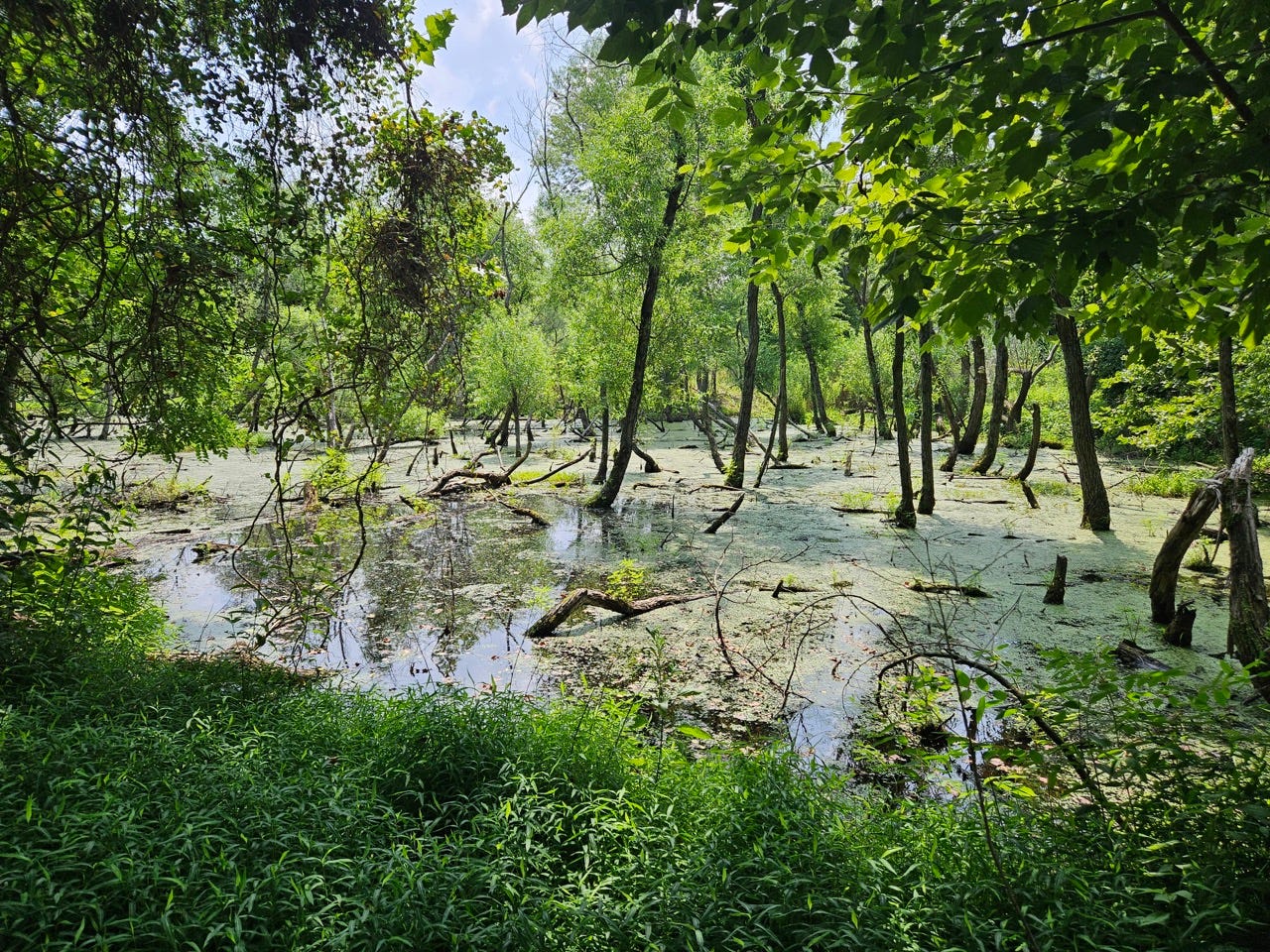
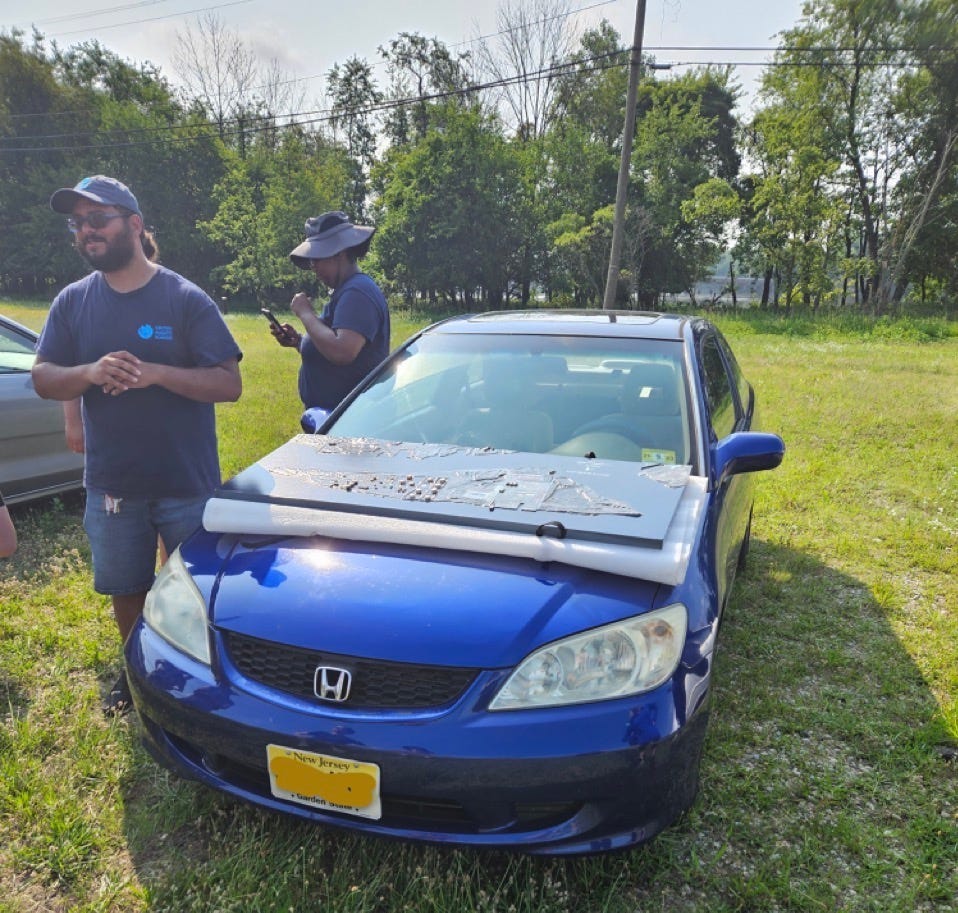

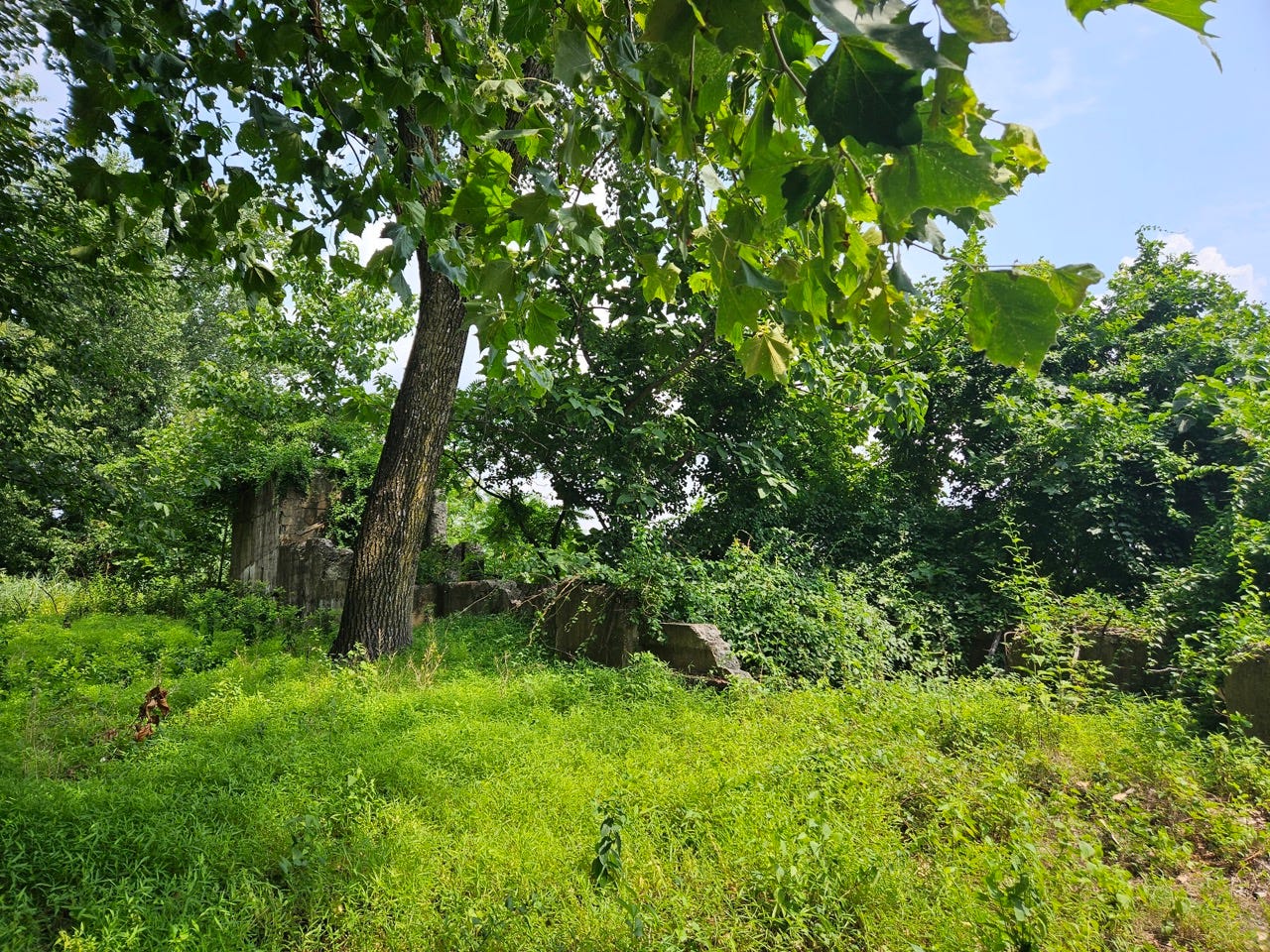
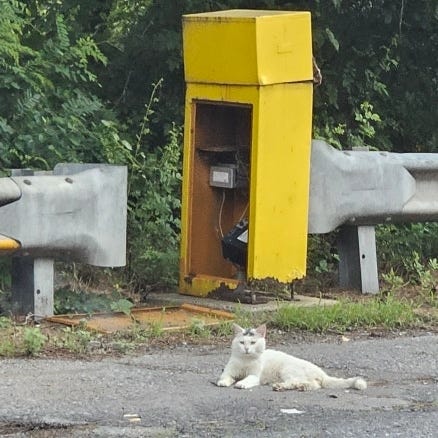
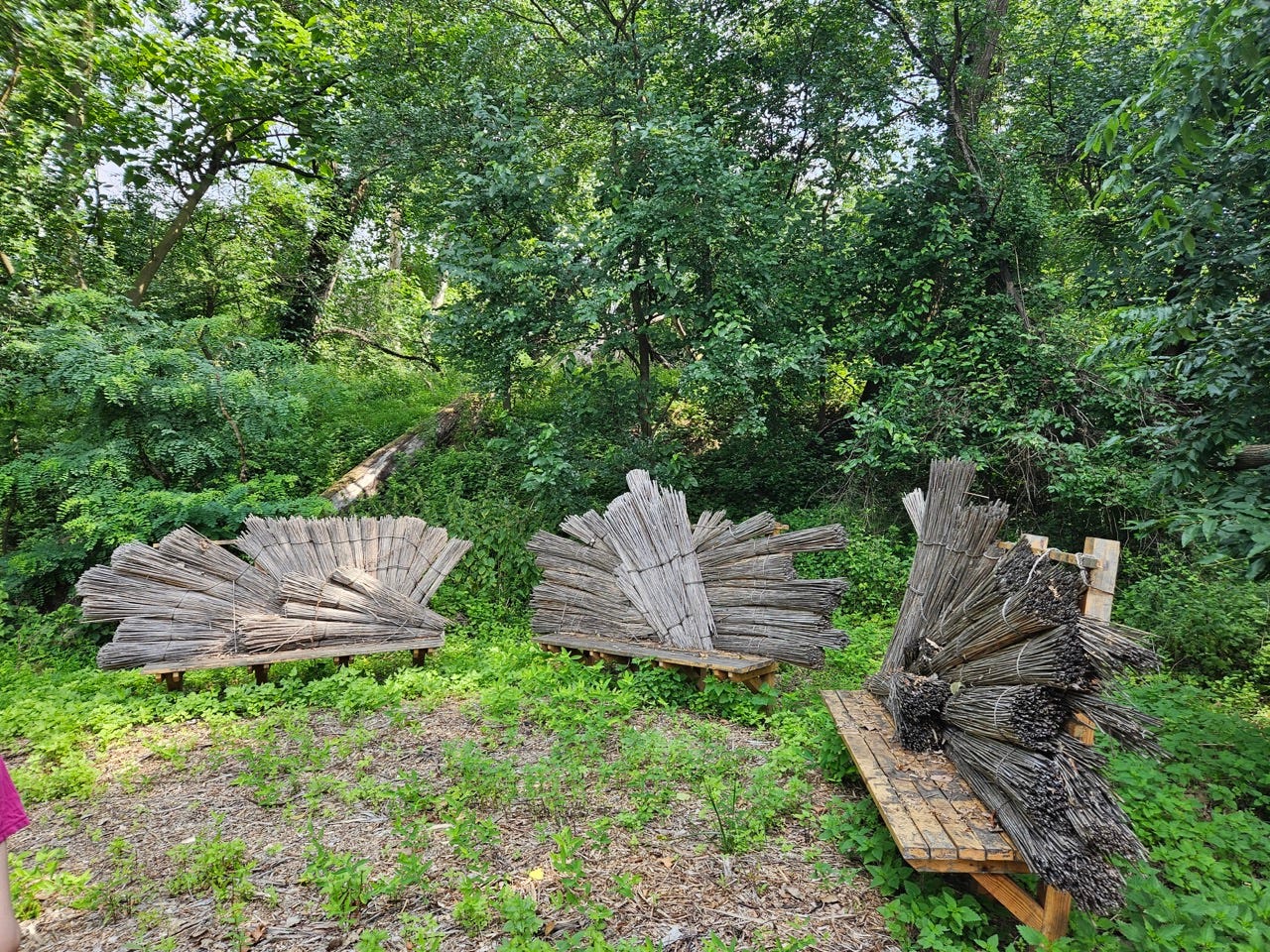
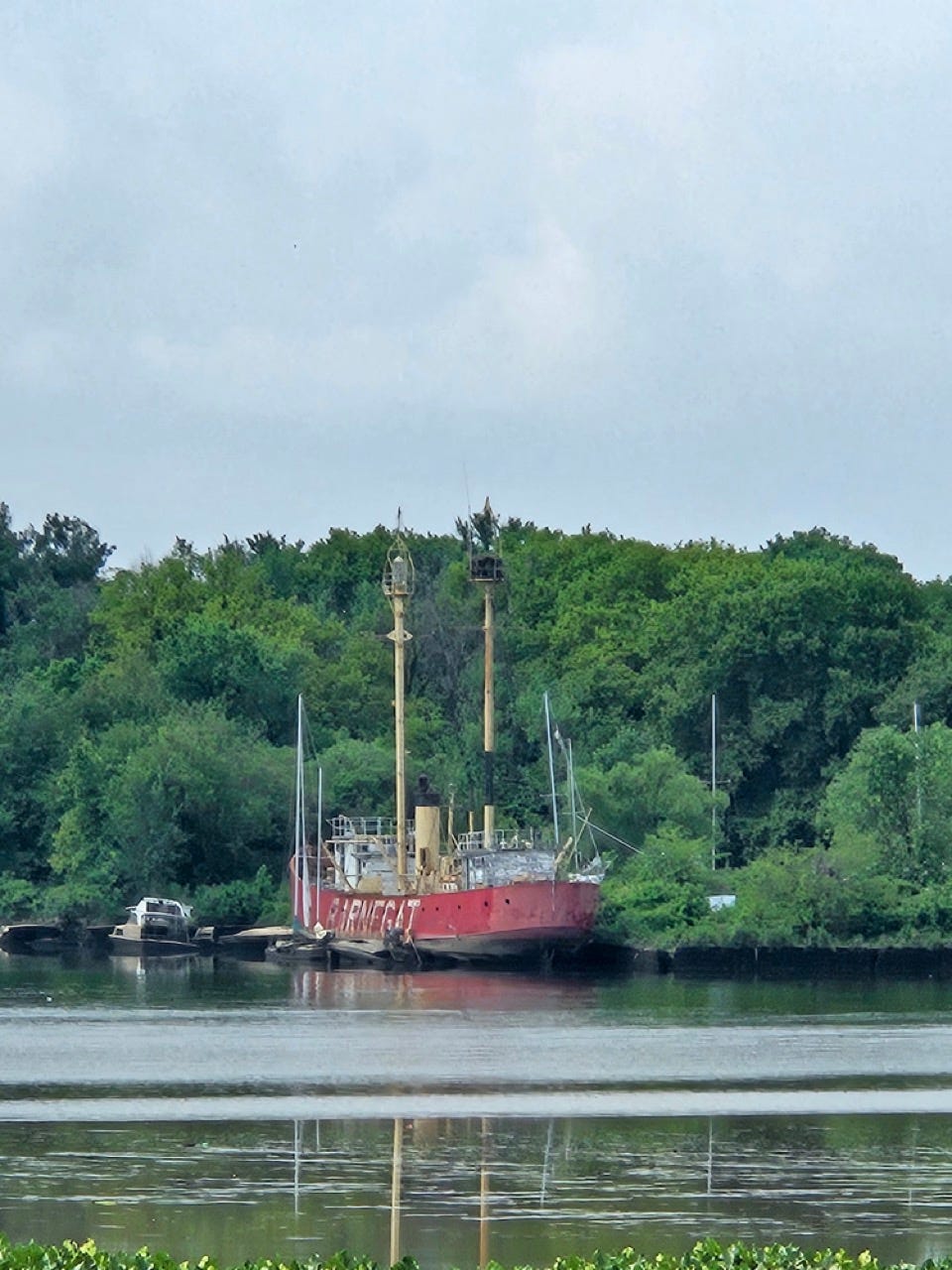
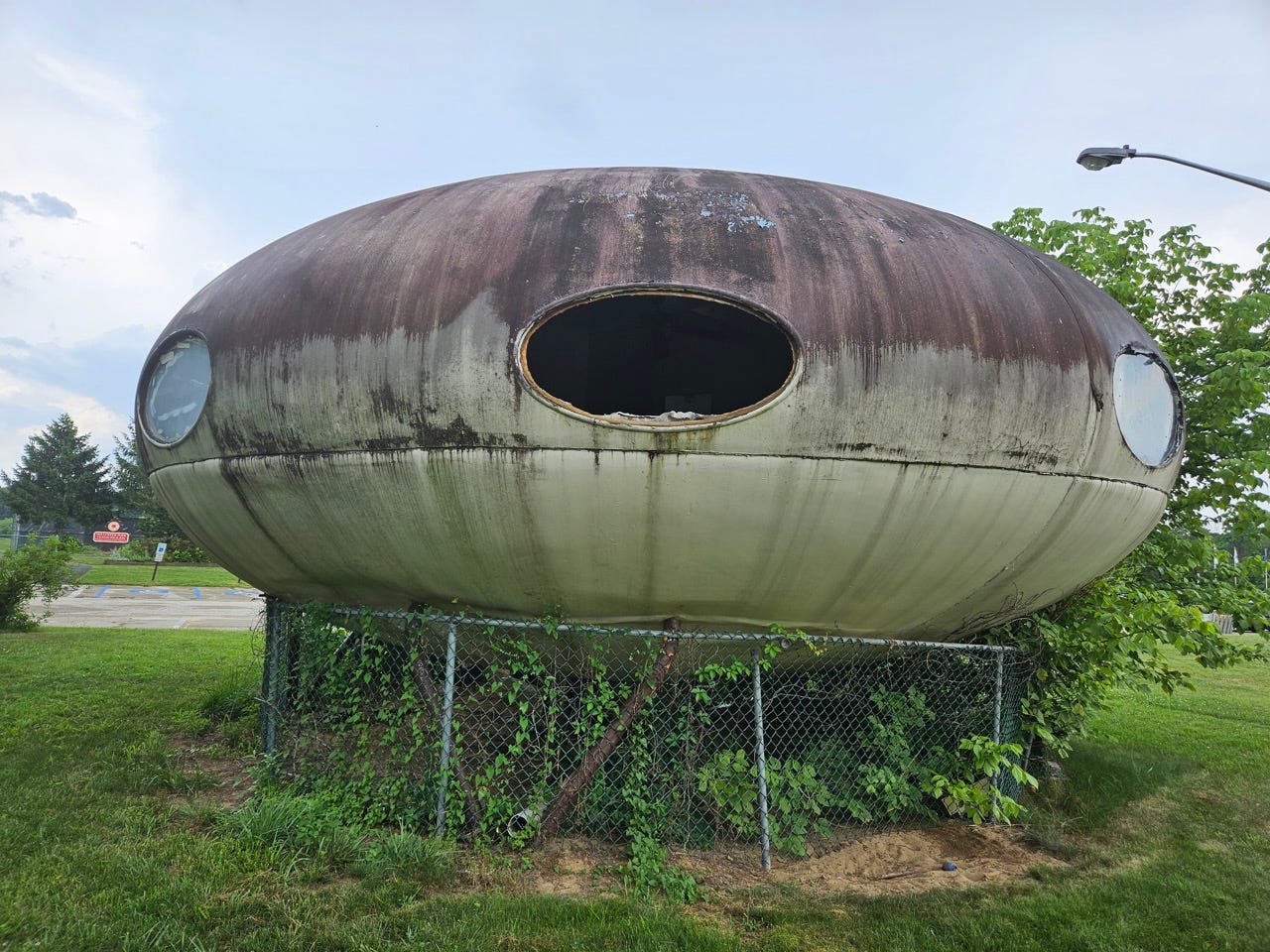
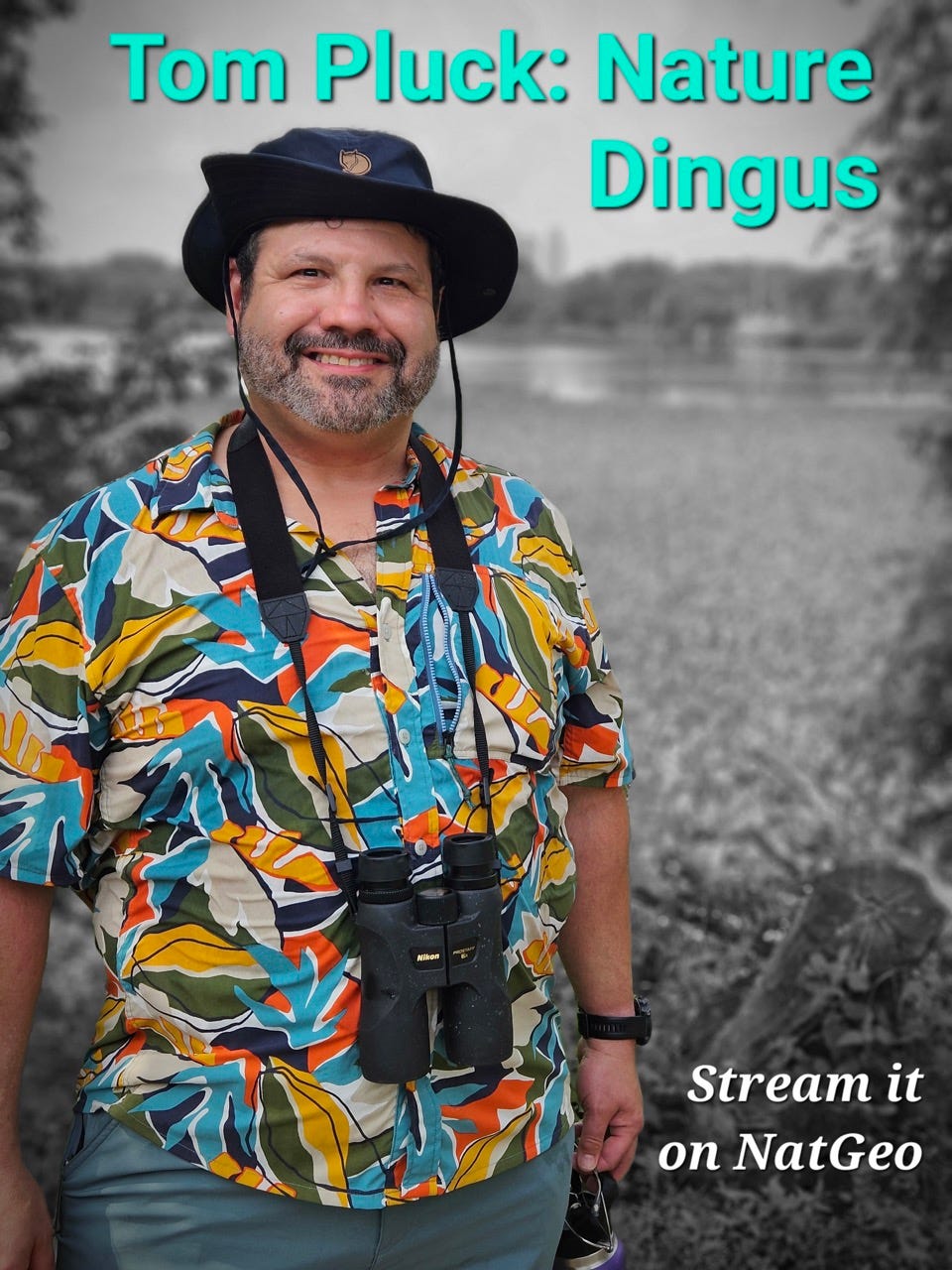
The Barnegat wasn’t used as a shipping vessel. It was a famous Light Ship, a critical navigation marker placed near Barnegat Bay NJ to warn of shoals or other critical hazards beneath the water.
It was clearly identified on Coast Guard Navigational charts as it was permanently anchored and lighted.
Lightships were used where it would have been difficult to impossible to build a lighthouse. There were others. They certainly were in use in the 1950’s and likely much later.
I don’t know what kind of navigational aid is on that site now but the hazard to shipping must still be identified somehow.
Be a good research topic.
Sorry about your luncheon disappointments, but it sounds like an interesting excursion.
I love Richard Russo! I'm pretty sure I've read all his published work. "Nobody's Fool" was my introduction as well, but my fave is probably "The Risk Pool".